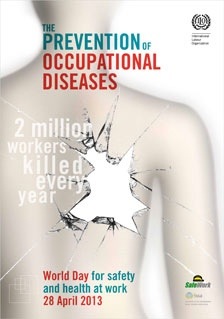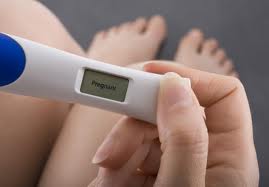Safety at home – focus of world health and safety at work day – first aid kits at home
World Day for Safety and Health at Work is globally marked on the 29th of April. The campaign, which has been marked by the International Labour Organisation (ILO), an arm of the United Nations, since 2003, is an initiative to promote safety. As is usually said, charity begins at home. Thus before safety can be exported to the work environment, it has to be felt at the home front.
Minor injuries and accidents are a normal occurrence especially in homes where there are children and though nobody prays for medical emergencies, they are inevitable. A person could slip and fall; there could be hot water/oil accidents; fire accidents; insect stings; drowning; bites from pets and other animals, etc. The question that remains to be answered is “how prepared are we for emergencies?” A lot of people have heard about first aid kits but how many homes have this and how equipped are these kits?
Being safety conscious and able to provide first aid treatment before the arrival of a doctor can be a deciding factor if an injured person lives or dies. Mr. Temiloluwa Gbarada, a National Examination Board in Occupational Safety and Health (NEBOSH) certified and Managing Director and Chief Executive Officer, Gimet Concept, a health, safety, security and environmental consultancy company, states that “most Nigerian families do not see the need to take personal health and safety seriously and this often leads to injuries and health hazards which could have easily been avoided. One of the most important aspects of safety is good house keeping, which is not limited to the homes alone but also in keeping the immediate environment neat and orderly to reduce the risk of injuries.
“Also, many homes do not have first aid kits and we need re-orientation. First aid kits are very important and should be in our cars because one can’t tell when it would be needed. First aid treatment is not to take the place of medical care from a hospital; it is only an avenue to prevent the injury from escalating before medical help arrives.”
A first aid kit could come in a variety of sizes and could be purchased or constructed. However, safety practitioners have stated that the box must be roomy, durable, easy to carry and simple to open. Having a kit is important because it provides a central point for all medical needs in the home. However, it should be kept out of reach of children.
A first aid box could contain a number of materials but Mr. Gbarada states that a risk assessment should be carried out to ascertain the likely hazards that could occur in a home or office.
“For instance, while not all first aid kits must have an inhaler, a home where there are asthmatics needs to have one. So, the kit should be appropriate for the type of injury or illness that is likely to occur in a particular environment,” he said. He adds that some basic materials should be in a first aid kit and these include:
First aid guide.
First aid record book to show first aid treatments that have been carried out and keep tabs on what materials have been used and need to be replaced.
Thermometer to check and monitor temperature.
Elastic bandages
Sterile adhesive dressings
Splint
One-way barrier device for rescue breathing (Cardio-Pulmonary Resuscitation, CPR)
Gauze squares for cleaning wounds
Disposable gloves (This should be disposed appropriately after use for infection control)
Sterile saline solution/sterile water for emergency eye wash. The saline solution should be discarded after opening so it doesn’t get contaminated.
Antiseptic solution for cleaning wounds and skin
Scissors
Safety pins
Torch: This has proved to be important especially at late night emergencies and when there is no power supply. There have been cases where wrong drugs were taken due to inadequate lighting to read prescriptions and labels.
List of emergency numbers.
There have been a number of contentions on whether drugs and ointments should be included in a first aid box. According to Dr. Grace Osaghea, a medical practitioner, “the problem with having drugs in a first aid box is that it encourages self medication which is frowned upon in medical circles. Some people feel they can just take the drugs and don’t need to see a doctor and this defeats the purpose of first aid. First aid, just as the name implies, should be temporary, immediate assistance pending the arrival of a doctor. It should not take the place of a doctor.”
Mr. Gbarada adds that “there have been reported cases of reactions to certain drugs and ointments. A good case is aspirin, which is a pain reliever but some people have allergic reactions to. Reports have shown that aspirin taken during an illness caused by virus such as flu, chicken pox and upper respiratory infections can lead to Reye Syndrome (a potentially life threatening disease with symptoms such as vomiting, nausea and extreme fatigue that can lead to a coma, in those who are allergic to it). A family that has a member who is allergic to aspirin but is unaware and goes ahead to buy it over the counter and puts in a first aid box puts the person at risk.
“Also, certain ointments have been used to treat minor skin injuries, reduce infections and speed up healing but sometimes, certain people may be allergic to it and using it without a prior prescription from a doctor can result to reactions such as swelling, itching, rash and even blisters. So, before any medication is put in a first aid box, it must be recommended by a doctor and once placed in the box, it should be periodically checked for expiration.”
Though safety practitioners have encouraged the administration of first aid, they have continued to harp on the importance of consulting with a doctor long before an emergency occurs. This is so as to provide credible and authentic information to guide the administration of first aid. The moment of emergency is not the time to begin experimenting and resorting to the internet for information. This could put the casualty at a more dangerous position.















